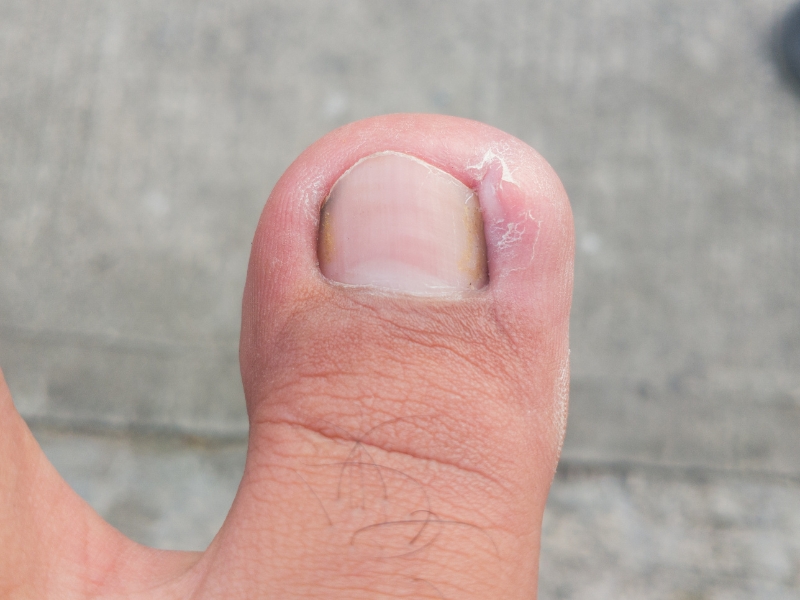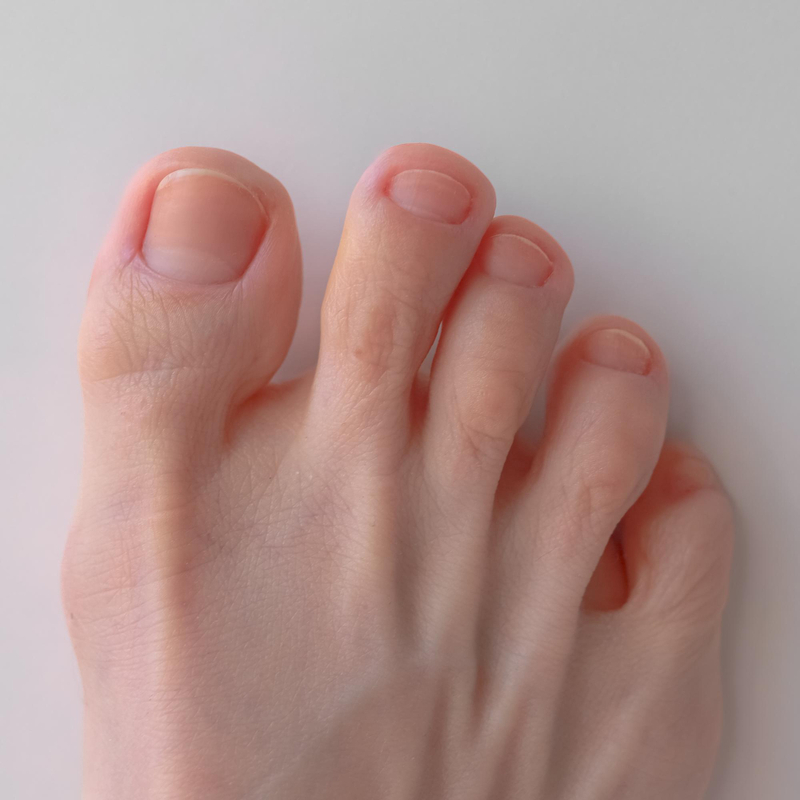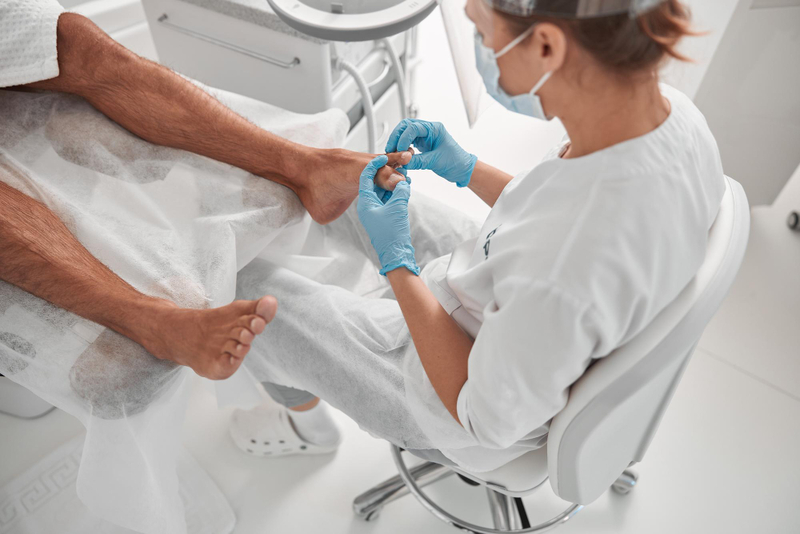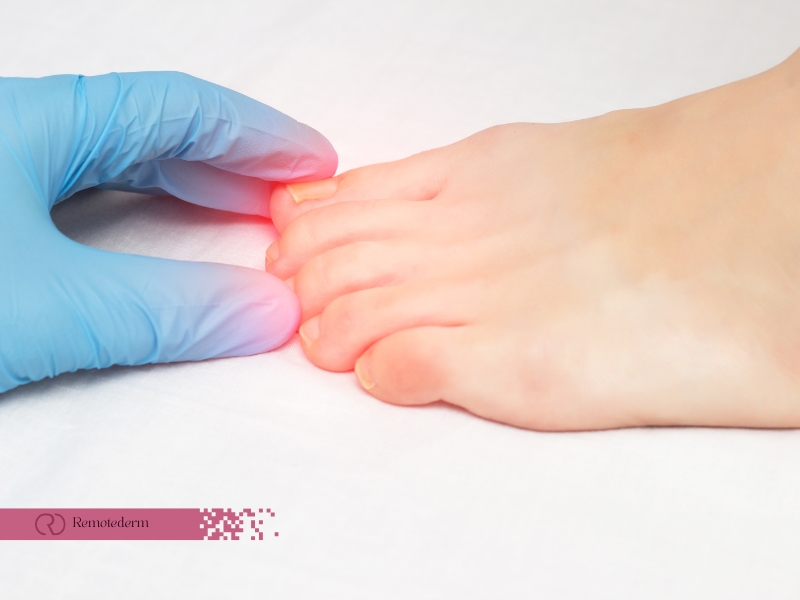Ingrown toenails are a common yet painful issue that can impact your daily life. However, with the right knowledge and self-care practices, you can prevent and manage them effectively. This guide offers a comprehensive look into the causes, symptoms, and treatments for ingrown toenails, along with expert advice on how to care for them at home. Tailored for Canadians, it emphasizes practical solutions for dealing with this condition in different climates and lifestyles.
Understanding Ingrown Toenails
An ingrown toenail is formed when the toenail edge grows into the toe’s skin. This can lead to irritation, redness, and, in some cases, infection. Factors that cause ingrown toenails include:
- Improperly trimmed nails: If your nails are cut too short or not straight across, they can grow into the skin. To avoid this, ensure that your nails are correctly trimmed.
- Tight-fitting shoes: Too-tight shoes might cause your nails to dig into your toes. This pressure may cause the nail to grow into the skin, resulting in an ingrown toenail.
- Nail Injury: Any injury to your toe can result in an ingrown toenail. This is because the injury may promote aberrant nail growth.
- Nail conditions: Conditions such as fungal infections can cause your nails to thicken or widen, leading to ingrown toenails. It’s important to treat any nail conditions promptly to prevent complications like ingrown toenails.

Can ingrown toenails cause permanent damage to the toe?
Yes, if left untreated, an ingrown toenail can cause permanent damage to the toe. The overgrowth of skin over the nail can lead to enduring changes in the tissue, potentially resulting in infection, increased pain, and swelling. In severe cases, an infection from an ingrown toenail can even reach the bone of your toe. Such a toenail infection can also result in foot ulcers or open sores, and a decrease in blood flow to the infected area. Decay and death of tissue at the infection site are also possible.
These complications can be especially severe for individuals with diabetes, which can lead to poor blood flow and nerve damage in the feet. Therefore, it’s crucial to seek medical attention if you’re experiencing significant discomfort from an ingrown toenail or if there are signs of infection. It’s also important to note that the nail matrix, the part of the nail bed where new nails are produced, can be affected by these conditions, further complicating the situation.
Can You Prevent Ingrown Toenails?
Yes, most cases of ingrown toenails can be prevented. Here are some strategies to help prevent ingrown toenails:
- Properly Trim Nails: Cut your nails straight across and avoid trimming them too short. The corners of the nail should be visible above the skin.
- Wear Properly Fitting Shoes: Tight footwear or narrow shoes can place pressure on the nail wall when the big toe pushes into the second toe. Wearing shoes that fit properly can help prevent this.
- Avoid Toe Injuries: Any injury to your toe can cause an ingrown toenail. Try to avoid stubbing your toe or dropping something on your foot.
- Treat Nail Conditions: Conditions such as fungal infections can cause your nails to thicken or widen, leading to ingrown toenails. It’s important to treat any nail conditions promptly to prevent complications like ingrown toenails.
- Soak Your Feet: Soaking your feet in warm water with Epsom salt or a mild soap for 10 to 20 minutes a day can help prevent ingrown toenails.
- Genetic Predisposition: Some people inherit the tendency to develop ingrown toenails. If ingrown toenails run in your family, you may be at a higher risk.

Remember, prevention is always better than cure. By following these steps, you can significantly reduce your risk of developing ingrown toenails.
How to Fix an Ingrown Toenail
If you have an ingrown toenail, you can do the following self-care steps:
- Soak Your Foot: Immerse the affected foot in warm water for 15-20 minutes, 3-4 times each day. This can assist to minimize swelling and relieve discomfort. Adding Epsom salt to the water might also help to calm the skin.
- Use Cotton or Dental Floss: After soaking, apply a small piece of cotton or dental floss under the ingrown edge to encourage the nail to grow over the skin edge. This can help the nail develop correctly.
- Apply Antibiotic Cream: Apply an over-the-counter antibiotic cream and bandage the affected area. This can assist to avoid infections and aid healing.
- Wear Comfortable Shoes: Use open-toed shoes or sandals until your toe recovers. This can help relieve pressure on the toe, allowing it to heal.
Remember, if your symptoms worsen, or if you have diabetes or another illness that causes poor blood flow to your feet, consult a doctor.
Ingrown Toenail Removal
In severe cases, when an ingrown toenail doesn’t improve with self-care, a healthcare provider in Canada may recommend ingrown toenail removal. This procedure typically involves numbing the toe, cutting away the ingrown portion of the nail, and possibly removing part of the surrounding tissue. It’s a relatively quick procedure, and many individuals experience relief shortly after. However, continuing proper foot care afterward is crucial to prevent the ingrown toenail from returning, especially given Canada’s varied climates that can impact foot health.

Online Nail Dermatologist and Nail Diseases Chart
Consult an online nail dermatologist if you require additional assistance. They can offer tailored advise and treatment alternatives based on your particular situation. A nail diseases chart can also assist you comprehend different nail disorders, such as ingrown toenails, and guide you through proper nail care. These resources can be quite useful in keeping your nails healthy and preventing diseases such as ingrown toenails.
Final Thoughts
Ingrown toenails can be effectively managed with proper self-care and preventative measures, especially considering the diverse weather conditions in Canada that can affect foot health. Understanding the condition and its causes is key to taking the right steps toward treatment and prevention. Remember, when in doubt, always seek professional medical advice. Your feet are a vital part of your overall health, and taking care of them can help you lead a more comfortable and active life, whether you’re braving Canadian winters or enjoying the summer outdoors.
FAQs
1. Can I exercise with an ingrown toenail?
Yes, but choose low-impact activities and wear comfortable shoes to avoid further irritation. High-impact activities can exacerbate the condition.
2. Are ingrown toenails genetic?
While anyone can get an ingrown toenail, some people may be more prone due to the natural shape of their nails. If ingrown toenails run in your family, you may be at a higher risk.
3. Can I use essential oils for ingrown toenails?
Some essential oils may help with symptoms, but they should not replace medical treatment. Always consult with a healthcare provider before starting any new treatment.
4. How long does it take for an ingrown toenail to heal?
With proper care, most ingrown toenails improve within a few days to weeks. If symptoms persist, seek medical attention. It’s important not to ignore persistent symptoms as they can lead to complications.
